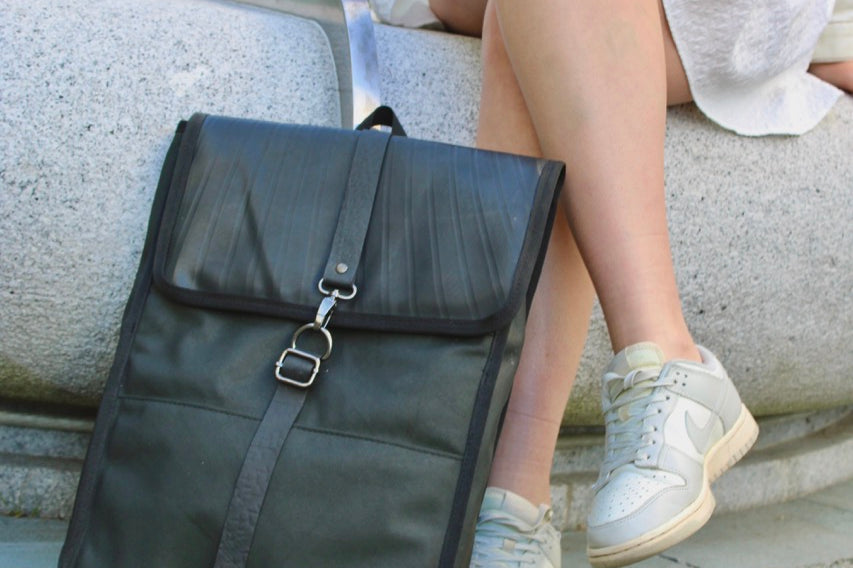
The concept of a circular economy is gaining momentum as the global community becomes increasingly aware of the environmental costs associated with a linear, wasteful economy. In fashion, the traditional linear model - take, make, dispose - has led to rampant overconsumption and waste, contributing to environmental degradation. Upcycled fashion, however, offers a fresh, sustainable alternative that aligns perfectly with the principles of a circular economy.
What Is the Circular Economy?
A circular economy is a regenerative system that minimises waste and makes the most of resources. Instead of a linear process that creates products, uses them, and then disposes of them, a circular economy focuses on extending the lifecycle of materials and reintroducing them back into production at the end of their initial use. The goal is to create a system where the value of products and materials is maintained for as long as possible, reducing the environmental footprint and dependence on finite natural resources.
How Upcycled Fashion Fits In
Upcycling plays a significant role in the fashion industry’s transition to a circular economy. Unlike recycling, which often breaks materials down to be reprocessed, upcycling takes existing materials or products and transforms them into something of equal or greater value, without the need for new raw materials or energy-intensive processes.
Here are some key ways upcycled fashion supports the circular economy:
1. Reducing Waste
One of the core principles of the circular economy is minimising waste. In fashion, the current "fast fashion" model leads to large amounts of textile waste - often disposed of in landfills after only a few wears. Upcycling intercepts this waste by repurposing discarded materials into new, wearable products. Whether it’s leather offcuts or old bicycle inner tubes, upcycling gives these items new life.
At Paguro Upcycle, we transform materials that would otherwise be discarded into stylish, unique accessories. For example, our recycled rubber bags and jewellery are made from reclaimed inner tubes, which would have ended up in a landfill if not repurposed.
2. Conserving Natural Resources
By upcycling existing materials, there is less demand for virgin resources. The production of conventional clothing items, such as cotton or polyester, requires enormous amounts of water, energy, and raw materials. Upcycling cuts this process out entirely by using what has already been produced, conserving vital resources like water, oil, and energy.
For example, producing a single cotton T-shirt requires around 2,700 litres of water, while the production of polyester - a common fast-fashion material - relies heavily on fossil fuels. Upcycled fashion eliminates this wasteful consumption of resources.
3. Lowering Carbon Emissions
Manufacturing new textiles requires significant energy, contributing to greenhouse gas emissions. By using existing materials, upcycled fashion reduces the carbon footprint associated with creating new products. The process of upcycling often requires minimal energy compared to recycling, which involves melting down or breaking apart materials before reprocessing them.
At Paguro, our upcycled accessories help reduce the carbon emissions typically associated with producing new fashion items, allowing consumers to make eco-conscious decisions.
4. Encouraging Conscious Consumerism
The circular economy encourages consumers to rethink their relationship with fashion, moving away from the "throwaway" culture promoted by ultra-fast fashion. Upcycled products, with their durability, uniqueness, and creative designs, help consumers embrace a more sustainable lifestyle. These products last longer, and each one tells a story - whether it's made from salvaged rubber, repurposed wood, or reclaimed fabrics.
By purchasing upcycled fashion, consumers become part of the circular economy, supporting brands that prioritise sustainability and encouraging others to do the same.
The Future of Fashion in a Circular Economy
The fashion industry is one of the world’s largest polluters, but upcycling offers a way to turn the tide. As we embrace the principles of the circular economy, brands like Paguro Upcycle are leading the way by creating beautiful, sustainable fashion that extends the lifecycle of materials and reduces environmental impact. Upcycling isn't just a trend - it's a vital step in transforming fashion into a truly sustainable industry.
As consumers, we have the power to drive change. By choosing upcycled products, we can reduce waste, conserve resources, and support the transition to a circular economy. Together, we can create a future where fashion doesn't cost the Earth.




Comentarios (0)
Regresar a Vista desde la piscina de rocas